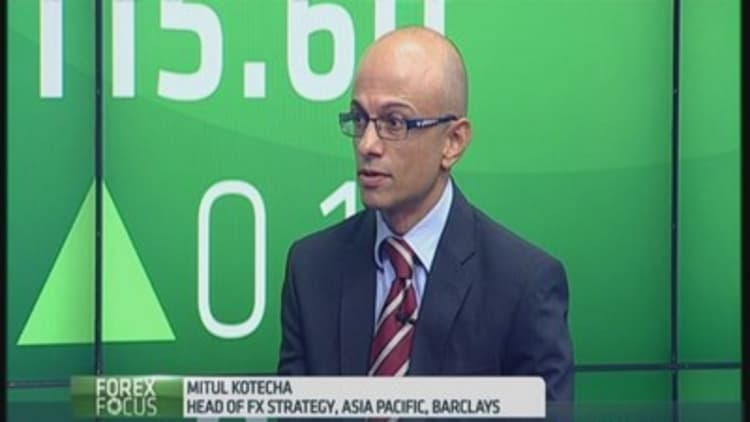The Reserve Bank of Australia's (RBA) attempts to cool the country's housing market could significantly hurt consumer demand, according to research from Moody's Analytics.
Australia's central bank underestimates the tight relationship between consumption and house prices, Moody's said in a report, noting that housing currently accounts for 55 percent gross household assets, well above the global average. By comparison, housing constitutes 25 percent of U.S. household wealth.
"Consumer spending has steadily accelerated over the past 12 months… a lot of the consumption lift is thanks to rising house prices, and without it, demand could be considerably weaker," the report said.
Read MoreAustralia's record-low rates to head further south
"The link between asset prices and consumer spending is particularly important in the current policy environment. A key reason behind the record low interest rates of today's stimulative Reserve Bank of Australia monetary policy settings, which have helped to lift house prices over the past two years, is that they will in turn drive an increase in consumer spending," it added.
However, that assumption may not be well-founded, Moody's argues, pointing to examples of household consumption moving with asset prices. In 2008-2009, slower consumer spending corresponded with a fall in asset prices and housing wealth.

RBA efforts to reduce prices
The central bank has repeatedly voiced concerns about "excessive speculative activity" amid soaring prices in the residential market. Prices surged 9.1 percent on year during the third-quarter, official data showed; Sydney saw the biggest rise at 14.6 percent.
Read MoreAustralian exports to China still face hurdles
In its Financial Stability Review, the RBA said the composition of housing and mortgage markets is "unbalanced," with heavy lending to investors. In recent months, it suggested the use of macro-prudential tools, such as tightening bank lending standards to reduce the amount of credit for home purchases, and advocated an increase in home building activity to rein in prices.
However, these moves could have undesired economic effects: "A sharp downturn in house prices would likely push the Australian economy into recession," Levine said.
Watch out for rate hikes

House prices may be vulnerable to a bigger correction when interest rates rise and could have a larger-than-expected impact on consumer demand, Levine said. Consensus view is for the central bank to normalize interest rates next year after leaving them unchanged at a record low of 2.5 percent since August 2013.
Read MoreAustralia's central bank keeps rates low, consumers encouraged
If the RBA raises interest rates by 25 basis points every month from May 2015 until it hits the neutral rate of 4.5 percent in December, house prices could decline 4 percent by 2017, Moody's said. Subsequently, consumer demand would be 1.3 percent lower, versus a 0.4 percent decrease by the RBA's calculations.
"The RBA should take a cautious approach to normalizing interest rates when the time arrives," Levine said
Meanwhile, Goldman Sachs doesn't expect a rate hike until March 2016.
Read MoreRBA: Labor market subdued but has stabilized
"The introduction of additional macro prudential policies will provide the RBA with some additional flexibility, which in conjunction with likely new capital rules for banks, will likely require less need for interest rate normalization to occur in 2015," the bank said in a note.

